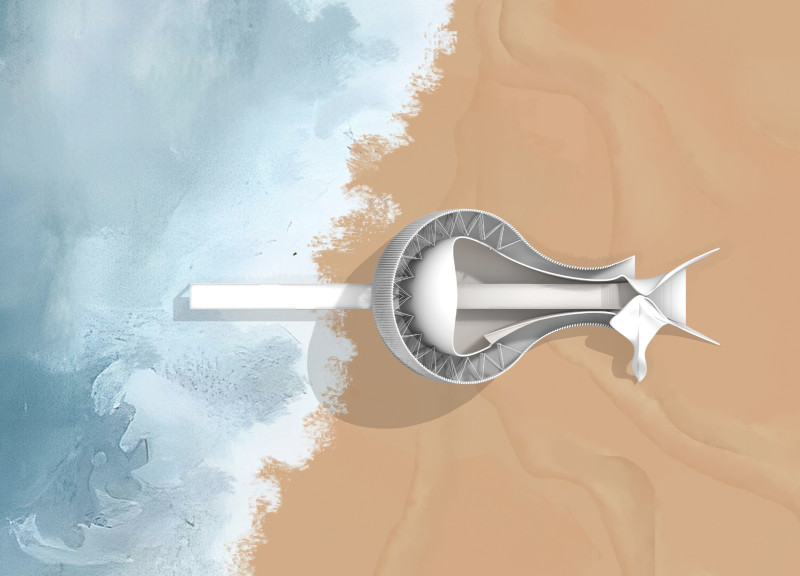5 key facts about this project
At the core of the design is a commitment to blending functionality with aesthetic appeal. The architectural composition employs an open-plan layout, which encourages flexibility and adaptability, allowing for various configurations based on the needs of the users. This approach not only maximizes the efficiency of the space but also creates an inviting atmosphere that encourages collaboration and social interaction. Key areas such as communal gathering spots, educational facilities, and recreational spaces are seamlessly integrated, facilitating a fluid movement throughout the building.
The unique design of the project is further enhanced by its materiality. A careful selection of materials plays a pivotal role in defining the project's character. The use of locally sourced timber provides warmth and texture, establishing a connection to the surrounding landscape while promoting sustainability. Complemented by concrete and glass elements, the material palette reflects both durability and transparency. Large glass windows not only enhance natural lighting but also offer stunning views, fostering an interactive relationship between the interior and exterior environments.
Attention to detail is evident throughout the design. Architectural features such as recessed lighting fixtures and bespoke furniture pieces are thoughtfully incorporated to reinforce the project’s overall aesthetic. Landscaping elements further enhance the site, with native plants chosen for their ecological benefits and low maintenance requirements, promoting biodiversity while ensuring the area remains visually appealing. The design also addresses environmental considerations through passive solar strategies and rainwater harvesting systems, exemplifying a sustainable approach that minimizes ecological impact.
The architectural design embodies specific themes and ideas that resonate with contemporary architectural discourse. For instance, the interplay of light and shadow throughout the space serves not only as a visual articulation of the building but also impacts the users' experience, creating dynamic environments that change throughout the day. This thoughtful manipulation of natural light adds to the building's functional and psychological comfort, enhancing the overall user experience.
What sets this project apart is its comprehensive approach to community involvement in the design process. The architectural team engaged with local stakeholders to ensure the building meets the actual needs of the community it serves. This participatory design process resulted in spaces that resonate with local culture and identity, creating a sense of ownership and pride among the residents who will utilize the facility.
Given the complexity and nuance of urban environments, the architecture of this project adeptly addresses the challenges present in its geographical context. By balancing modern design principles with a respect for local traditions and ecological considerations, the project stands as a model for future developments in similar settings.
For those interested in diving deeper into the nuances of the architectural design, exploring elements such as the architectural plans, architectural sections, and architectural ideas will unveil further insights into the innovative thinking and careful planning that shaped this project. Engaging with these materials offers a comprehensive understanding of how the design communicates its intentions and fulfills its role within the community.























